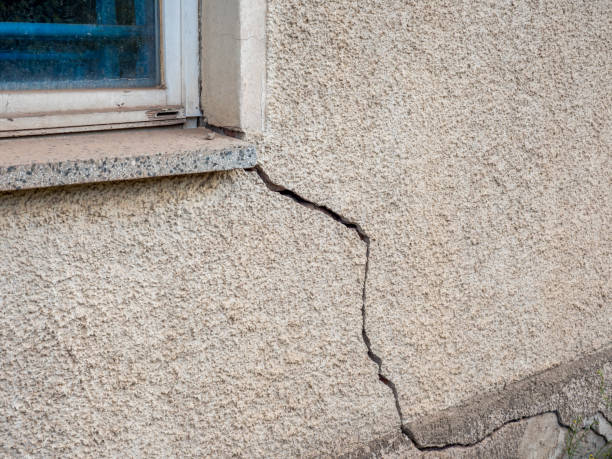
Stucco is a popular and durable exterior finish for homes in Paradise Valley, AZ, offering both aesthetic appeal and thermal performance. However, even a well-installed stucco system can develop cracks over time. While not all cracks are serious, knowing when to be concerned about stucco cracking can protect your home from more costly damage down the line.
Common Causes of Stucco Cracks
Stucco can crack for a variety of reasons, many of which are specific to the desert climate and construction practices in Arizona. Common causes include:
- Weather Conditions: In Paradise Valley, temperature fluctuations and monsoon moisture can cause expansion and contraction in stucco, leading to cracks.
- Improper Installation: If stucco isn’t mixed or applied correctly—such as applying it too thinly or skipping curing steps—it’s more likely to crack prematurely.
- Building Movement: Foundation settling and natural seismic activity can create structural stress, often visible as diagonal or stepped cracks.
- Water Damage: If moisture gets behind the stucco—especially near windows, doors, or eaves—it can weaken the system and cause delamination or cracking.
We see many of these issues in homes across our Paradise Valley service area, where high-end finishes and aging masonry often need careful restoration.
Types of Stucco Cracks and What They Mean
Not all cracks are equal. Some are cosmetic, while others signal deeper structural problems.
- Hairline Cracks: Usually under 1/16 inch wide, these are common due to normal curing and settling. They’re not typically a cause for concern but should still be sealed to prevent moisture intrusion.
- Diagonal Cracks: Often seen extending from window or door corners, these could indicate foundation shifts and warrant a professional evaluation.
- Horizontal Cracks: These may suggest water penetration or poor installation and should be addressed promptly to avoid worsening conditions.
- Patterned or Map Cracks: Often caused by shrinkage or rapid drying during curing. While mostly cosmetic, they can develop into larger issues if left untreated.
We frequently assess patterned and diagonal cracking in Litchfield Park homes, where moisture and aging builds are common culprits.
When to Be Concerned About Stucco Cracks
While some cracks are minor, others signal a larger issue. You should contact a stucco professional if you notice:
- Cracks Wider Than 1/4 Inch: These may reflect foundational or structural shifts.
- Rapidly Growing Cracks: These suggest ongoing movement or deep material failure.
- Cracks Near Openings: Around windows or doors, cracks can become entry points for moisture, leading to rot or mold.
- Moisture Stains, Mold, or Bubbling: These indicate water intrusion—especially dangerous in systems not sealed with elastomeric coatings.
For commercial properties in Laveen, AZ, these signs can also threaten compliance and structural longevity if ignored.
How to Repair Stucco Cracks
Hairline Cracks can often be cleaned and filled using high-quality elastomeric caulk, which expands and contracts with temperature changes. This approach seals out moisture and maintains a seamless finish.
Larger Cracks usually require more involved repairs:
- The damaged area is cut out.
- Fresh lath may be installed.
- A multi-layer stucco application is performed to match the surrounding finish.
To ensure long-term success, these repairs should always be evaluated by a professional. Our team at Stucco Contractors Arizona offers precision repair techniques for all stucco types, from traditional to synthetic systems.
How to Prevent Stucco Cracks
Cracks can’t always be avoided, but you can reduce the risk through:
- Regular Inspections: Especially after storms or when adding new windows or doors.
- Proper Drainage: Keep gutters clean and ensure water is directed away from your foundation.
- Prompt Repairs: Don’t let hairline cracks widen or invite moisture in.
- Expert Installation: Always hire experienced professionals who understand Arizona’s climate and construction codes.
We apply these preventative measures with every project—whether it’s new construction or a full resurfacing job in Paradise Valley.
Don’t Ignore Stucco Cracks—Fix Them Right
Stucco may be tough, but cracks are a fact of life in the Arizona climate. Whether you’ve noticed minor fractures or significant structural signs, acting quickly can help you avoid expensive repairs down the road.
Call Stucco Contractors Arizona to schedule your inspection today. We’ll evaluate your stucco cracks, identify the cause, and offer the right fix to keep your home safe, dry, and looking its best.
